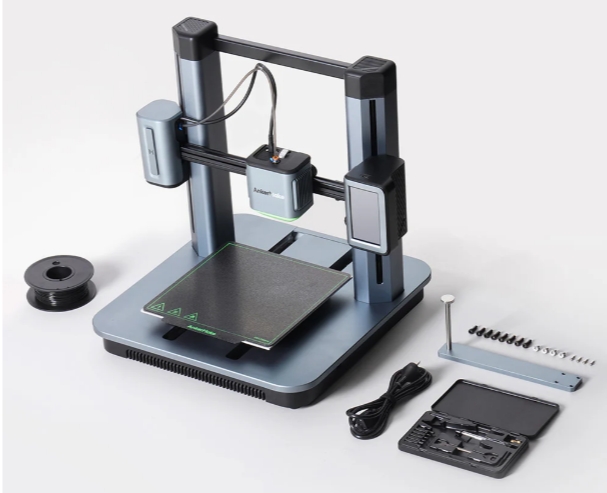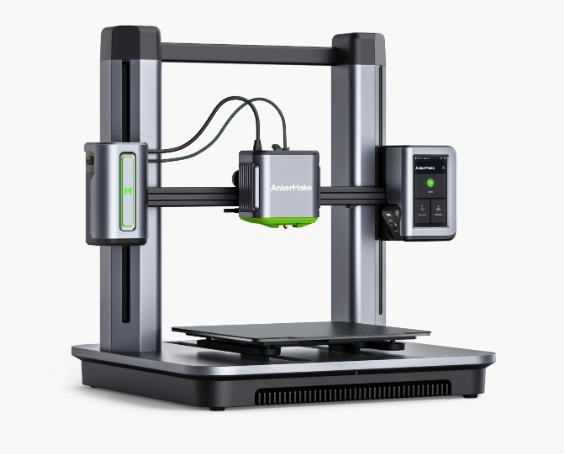3D printers build objects layer by layer from a digital model, turning ideas into physical reality. Accessible to hobbyists and professionals alike, this technology enables the creation of art, gadgets, prototypes, and cool things to 3D print with ease. By understanding its components and processes, you can explore limitless possibilities. This guide outlines the essentials of 3D printers, explains the step-by-step workflow, and highlights common technologies. Whether you’re a beginner or simply curious, it offers a strong foundation to help you get started on your 3D printing journey.

What Are the Key Components of a 3D Printer?
The Print Head: Extruders and Nozzles
The print head is the component responsible for extruding and depositing material to construct the object. It consists of an extruder that feeds the material, often filament, into a heated nozzle. The nozzle melts the material and precisely places it layer by layer on the print bed. Print heads come in different configurations, with some supporting multiple extruders for printing in various materials or colors simultaneously. The nozzle size also influences the level of detail and speed of the printing process. A smaller nozzle provides finer resolution but takes longer to print. Maintaining the print head by regularly cleaning and calibrating it ensures optimal performance and consistent quality in every print.
The Print Bed and Build Volume
The print bed is the flat surface where the object is created, and its properties significantly impact the final result. Many 3D printers feature heated print beds to prevent material warping and ensure proper adhesion during the printing process. The size of the print bed determines the build volume, which is the maximum size of an object the printer can produce. Some printers include features like auto-leveling beds to simplify setup and enhance accuracy. A well-calibrated print bed is critical for ensuring even layers and a smooth printing process. Whether you’re printing small decorative items or larger functional prototypes, the print bed and build volume dictate the scope and versatility of your projects.
Control Systems and Firmware
Control systems and firmware are the brains behind a 3D printer, translating digital instructions into precise mechanical movements. Firmware operates the printer’s hardware, managing tasks like controlling the temperature of the nozzle and print bed, adjusting print speed, and executing the G-code generated by slicing software. Modern 3D printers often feature intuitive interfaces, such as touchscreens or smartphone apps, to simplify operation. Connectivity options like USB or Wi-Fi further streamline the printing process. Some printers include advanced features, like filament sensors or power recovery systems, that enhance reliability and usability. Regular firmware updates ensure the printer remains compatible with new technologies and materials, keeping it versatile and efficient over time.
How Does the 3D Printing Process Work?
Creating a 3D Model with CAD Software
The journey begins with designing a 3D model using CAD (Computer-Aided Design) software. These programs allow users to create precise digital representations of objects, from simple geometric shapes to intricate, detailed designs. Popular CAD tools like Tinkercad and Blender cater to users of all skill levels, while some platforms offer pre-designed models that can be customized or printed directly. Once the design is complete, it is exported as a 3D printable file format, typically STL or OBJ. This file serves as the foundation for the subsequent steps in the printing process, ensuring the object’s dimensions and features are faithfully recreated. Learning CAD basics is an essential step for anyone interested in exploring the full potential of 3D printing.
Slicing: Converting Models into Layers
Slicing is the critical step where the digital model is prepared for printing by dividing it into thin horizontal layers. This process is accomplished using slicing software, which generates a G-code file containing detailed instructions for the 3D printer. The slicing software allows users to configure key parameters such as layer height, print speed, and material settings to optimize the final output. Additionally, supports can be added to ensure stability for overhanging parts or complex geometries during printing. The resulting G-code acts as a blueprint that guides the printer’s movements and material application. This step bridges the gap between the digital model and the physical printing process, ensuring accurate and efficient construction of the object.
Printing: Layer-by-Layer Construction
Once the slicing process is complete, the 3D printer follows the G-code instructions to create the object layer by layer. The print head deposits melted material onto the print bed, gradually building the object from the bottom up. Each layer adheres to the one below it, forming a cohesive and durable structure. Factors such as print speed, temperature, and material choice play a crucial role in determining the quality of the final product. Depending on the complexity and size of the model, the printing process can range from minutes to several hours. After the print is complete, minor post-processing tasks like removing supports or polishing surfaces may be required to achieve the desired finish.
What Are the Different Types of 3D Printing Technologies?
Fused Deposition Modeling (FDM)
Fused Deposition Modeling (FDM) is one of the most widely used 3D printing technologies, particularly popular among beginners and hobbyists. It works by extruding a thermoplastic filament through a heated nozzle, which deposits the material layer by layer to create the object. FDM printers are versatile, supporting a variety of materials such as PLA, ABS, and PETG. They are commonly used for creating prototypes, functional parts, and artistic projects. While FDM offers accessibility and affordability, achieving high-quality prints may require careful calibration and experimentation with settings. Despite its simplicity, FDM is a reliable and flexible technology that caters to a broad range of applications, making it a staple in the world of 3D printing.
Stereolithography (SLA)
Stereolithography (SLA) is a 3D printing technology that uses a UV light source, such as a laser, to cure liquid resin layer by layer into a solid object. Known for its precision and ability to produce smooth, detailed surfaces, SLA is widely used in industries like dentistry, jewelry, and engineering. The process begins with a resin tank and a build platform, which gradually raises as each layer is cured. While SLA delivers superior detail compared to FDM, it requires additional post-processing steps, such as washing and curing, to ensure durability. The material cost for SLA is generally higher, but its exceptional accuracy and fine details make it a preferred choice for professional and high-quality projects.
Selective Laser Sintering (SLS)
Selective Laser Sintering (SLS) is a high-end 3D printing technology that uses a laser to fuse powdered material, such as nylon, into solid layers. This method excels at producing durable, complex objects without the need for support structures, as the surrounding powder provides stability during the printing process. SLS is widely used in industrial applications, such as aerospace, automotive, and medical device manufacturing, due to its ability to create strong, functional parts. The technology’s capability to handle intricate designs and diverse materials makes it a powerful tool for advanced manufacturing. Although SLS machines are typically more expensive and require specialized expertise, the results are unparalleled in terms of strength and complexity.
What Can You Create with a 3D Printer?
Prototyping and Product Development
3D printing has revolutionized prototyping and product development by enabling rapid iteration and testing. Designers can create functional prototypes in a matter of hours, reducing development time and allowing for more frequent refinements. This capability is particularly valuable in industries such as consumer electronics, automotive, and fashion, where speed and adaptability are crucial. For startups and small businesses, 3D printing offers an affordable way to test ideas before investing in mass production. From conceptual models to final testing units, the ability to prototype efficiently has become a cornerstone of modern product development, fostering innovation and creativity.

Medical and Healthcare Applications
In the medical field, 3D printing is advancing patient care through personalized solutions and innovative tools. It is used to create custom prosthetics, dental implants, and surgical models, providing a tailored fit and improving functionality for patients. Surgeons use 3D-printed anatomical models for pre-surgical planning, enhancing accuracy and outcomes. Bioprinting, an emerging area within 3D printing, aims to create tissues and organs, potentially revolutionizing organ transplantation in the future. Additionally, 3D printing enables the production of medical devices and tools on demand, making it a cost-effective and versatile solution. Its applications in healthcare continue to expand, demonstrating its potential to transform medicine and improve lives.
Creative Projects and Custom Designs
3D printing is a playground for creativity, allowing users to design and produce one-of-a-kind objects. Artists, designers, and hobbyists use this technology to create everything from sculptures and jewelry to home decor and cosplay props. The ability to customize designs ensure each creation is unique and tailored to individual preferences. Whether crafting intricate art pieces or practical items like organizers and phone stands, 3D printing offers endless possibilities for personalization. Its accessibility and versatility make it an invaluable tool for turning imaginative ideas into tangible objects, empowering creators to bring their visions to life with precision and ease.
Conclusion
3D printing combines innovation, versatility, and creativity, transforming how we approach design and manufacturing. From understanding its core components to mastering the printing process and exploring advanced technologies, this guide has outlined the fundamentals of 3D printing. The ability to create prototypes, medical solutions, and custom designs highlights its potential to impact industries and individual lives alike. As 3D printing continues to evolve, its applications will expand, unlocking new opportunities for creativity and problem-solving. Whether for personal projects or professional endeavors, embracing 3D printing opens the door to a world of possibilities.
